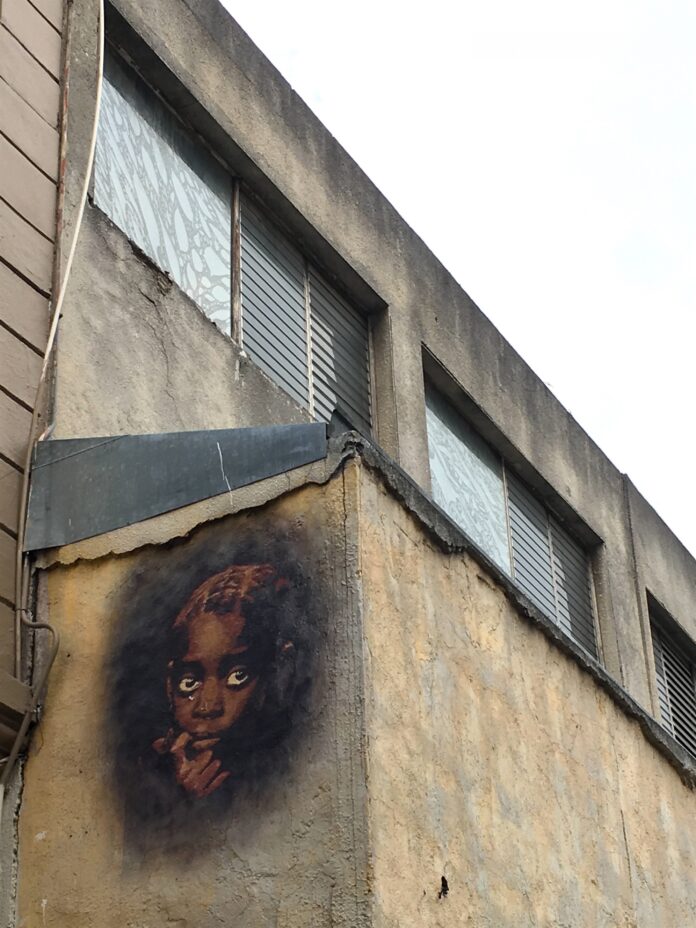
To discover a country torn apart by civil war and genocide, with the resources to build, but using them instead to destroy, is mobilizing.
I have traveled before. I even consider myself well traveled for my age.
But during my time in Spain, Australia, New Zealand, Canada and other places, I had few revelatory experiences. Nothing really forced me to sit and think.
Guatemala City was different.
The air was hot; the smog thick. People flooded the street in the city’s oldest and most famous downtown shopping district, La Sexta Avenida. I saw smiles, and heard laughter. Shops lined both sides of the pedestrian-only avenue. People were buying things: ice cream, running sneakers. Money – the Guatemalan quetzal – seemed to be flowing as fluidly as tap water.
I thought: Wasn’t this supposed to be a country left corrupted and disheveled by a 36-year civil war? Sure, we were in a touristy area, but the conditions seemed just as first world as in the developed-world places I’d visited.
Then, we left the avenida. Suddenly, the money stopped flowing. So did the water.
The Two Guatemalas
As of 2014, about 51% of Guatemalans lived in poverty, according to the United States Agency for International Development. Never in our 10-day, three-city trip was this more obvious than during our travels through the capital, Guatemala City. Towering skyscrapers stood mockingly over entire barrios of tin-roofed box homes built into cliff edges.
The city is organized into 22 zones, supposedly in order to more equitably divide government representation and resources. But I saw no equality. The zones were, rather, used to divide people by socioeconomic class. The richer lived in a few key areas – areas that received all the power, water and governmental assistance – while the areas where the poorer majority lived were left in ruin. Millions of people have been left without the bare necessities. We realized that utilities like running water, garbage disposal and electric lighting were scarce in the shantytowns.
Urban zoning was not the only tool used to refuse Guatemalans their rights. Brutal racism has had a longstanding history here, following the classic model of colonialism: the lighter your skin, the lighter your sentence. This leaves the indigenous Mayan peoples – the majority of the population, and almost all of the poor, according to USAID – facing extreme discrimination.
The oppression was obvious, in the difference in residencies; in the illiteracy of the women; and in the literal turning away of Mayans from white upper class establishments. It was apparent in the lifestyles of the indigenous peoples, and in their lack of awareness of their rights. It was obvious in the absence of middle and upper class Guatemalans in the poor parts of the city, and in the fact that the wealthy communities and shopping malls we saw were surrounded by armed guards and electric fences.
Where a reflection of this oppression could not be found, however, was in the Mayan disposition. Though their statures held the weight of decades of backbreaking labor, their countenances offered a facade – one that could nearly make you forget about what was being done to them. Their fighting spirit and determination to provide for their families and community stood as a test against the institutionalized persecution they’ve been forced to endure for over 500 years.
Half of Guatemala’s babies are malnourished. Journalists and activists we interviewed often blamed government corruption for that. We sensed a recurring theme: exasperation with all levels of government. Racism, sexism and bribery riddle most regulatory bodies, stymieing progress. What incentive is there to treat your people right, when you’re being paid to not do that?
Starting with the United Fruit Company, which set up operations in Guatemala in 1901 and quickly took control of the country’s railroads, ports, telecommunications, mail system, electric utilities and nearly 50% of Guatemala’s arable terrain, transnational companies in Guatemala have long ruled the land. They have dictated the laws, and determined the political leadership (by installing political leaders and influencing elections). In 1954, they famously orchestrated a coup d’ etat, carried out by the U.S. military, and ousted democratically President Jacobo Arbenz, who was attempting to carry out educational and land reform. For centuries, when the poor in Guatemala have tried to organize, they have been murdered, tortured and “disappeared.”
Transnationals that Take, and Rule
Today, transnational corporations still rule the land. They divert rivers away from communities, and use up too much electricity, spewing their toxic leftovers into indigenous peoples’ drinking water. Then, when activists march for the land and water that is rightfully theirs, they are shot down by government officials in the pay of corporate interests. With the government wrapped around their finger, transnational corporations author a never-ending cycle of abuse, which leaves Mayans struggling to survive.
I’m not sure when the revelation hit me. It was like a Venn diagram in my mind: a comparison of the injustices I face as a middle class white American, and those faced by indigenous Guatemalans.
It might have been when we were driving down the highway, in our safe, private caravan, passing neighborhoods made of stacked tin homes. From time to time, our view of the poverty would be blocked by massive illuminated billboards, depicting ads for new Rolex watches and plastic surgeries for butt lifts and boob jobs. The dichotomy of this — the glimpse through the window of poverty so deep, obstructed by images of faraway things so expensive that even my family couldn’t have afforded them, was a searing wake-up call.
Americans may live in a constant state of war, but it’s never on our home turf. The general functionality of government allows us to live in our own little bubble — and when you’ve never experienced anything else, it’s hard to see past what you have. But to see an entire country, torn apart over a history of colonialism, civil war, genocide and oppression, happily endowed with the money, resources and will to build, but instead using them to destroy, it is eye opening. To discover that so much of this state of affairs is a direct result of corporate and political irresponsibility is mobilizing.
I left Guatemala City hungrier. Hungrier for change. Hungrier for justice. Hungrier for economic, political and social growth here in the United States, in Guatemala and in the rest of the world too. Education and activism, wherever you are, is guaranteed to have a rippling effect. You want to do something to change injustice, everywhere. That “something” might be fundraising, volunteer work or teaching. Young journalists like me can help draw attention to injustices by writing about them.


